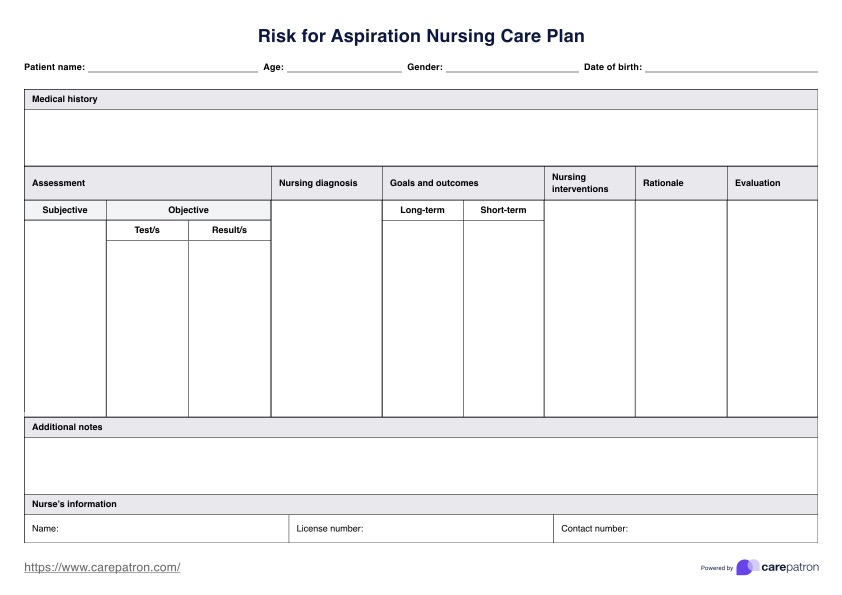The process involves assessing the patient’s risk factors, setting goals, planning interventions, and regularly evaluating outcomes.

Risk for Aspiration Nursing Care Plan
Effectively manage aspiration risks with our Risk for Aspiration Nursing Care Plan Template, designed for comprehensive patient care.
Use Template
Risk for Aspiration Nursing Care Plan Template
Commonly asked questions
Risk for Aspiration Nursing Care Plan Templates are used in various healthcare settings for patients at risk of aspiration due to conditions like dysphagia, impaired consciousness, or neurological disorders.
Risk for Aspiration Nursing Care Plan Templates guide healthcare providers in implementing and monitoring interventions to prevent aspiration.
EHR and practice management software
Get started for free
*No credit card required
Free
$0/usd
Unlimited clients
Telehealth
1GB of storage
Client portal text
Automated billing and online payments











